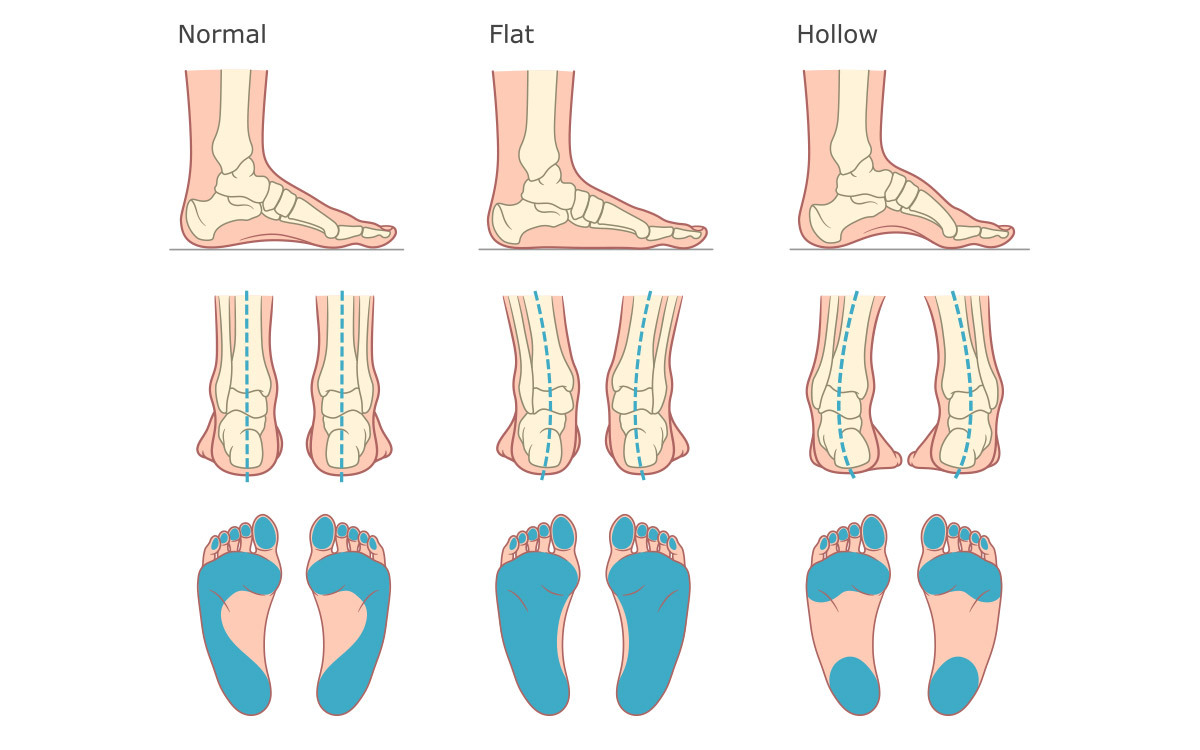Cushioned Shoe Insoles for Unintended Activity
When footwear is used for a purpose outside of its original intent, cushioned shoe insoles give customers the flexibility they need.

Shoes typically are offered in two generic shapes: regular, and wide. “Wide” and “regular” footwear classifications are born from an attempt to meet customer needs based on the most common differences in foot shapes. But, these classifications can be about as frustrating as a “one-size-fits-all” designation, or trying to purchase pants that are the right length based on a description of “short”, “regular”, or “tall.” What is “regular” anyway? When it comes to ergonomic footwear, the word “ergonomic” denotes that it accommodates an individual’s unique body type, and we simply don’t think something that’s supposed to be ergonomic can also be regular.
So how do you know if your feet are considered regular, and what does that have to do with how to choose a pair of shoes?
How to Find Your Foot Shape
We know there’s no way any footwear brand can design a truly customized shoe. Footwear designers have a huge task to design footwear that can be worn by a wide range of customers with all different foot shapes.
But foot shapes are far more diverse than “wide” or “regular”, of course.
Podiatrists use anatomical differences such as toe length and arch height to classify foot shapes.
To get a better idea of how many different foot shapes a given footwear designer is trying to accommodate, let’s consider what different foot shapes are out there in the world.
The Egyptian Foot: This foot shape is the most common, occurring in about 50% of the population, and is characterized by a tapering of the toes from longest (the big toe) to shortest (the pinky toe).
The Roman Foot: This foot shape, also known as the square foot, is least common, found in less than 10% of the population. It is characterized by the first 3-4 toes being aligned in length, while the remaining toes are shorter.
The Greek Foot: This foot shape, like the Egyptian foot, is common – found in about 40% of the population. It is characterized by the second toe being longer than all other toes, including the big toe.
Flat Foot: Many individuals have what is called a flat foot, which means they have no arch or very little arch. The heel may also collapse inward to create a flat foot shape.
Hollow Foot: Unlike the flat foot, a hollow foot occurs when an individual has an excessive inner that creates greater pressure on the forefoot and heel. The foot may also sink outward in shape.


Beyond these specific foot shapes are other characteristics such as gait and stride (with tendencies like pronation or overpronation), and activity level and type. These characteristics impact a customer’s perceived comfort level in their footwear, and brands should aim to be more customized to the individual footwear needs.
How Does Foot Shape Impact Your Need for Comfort, Performance, and Support in Footwear?
Individuals with an Egyptian foot shape are often most likely to be comfortable in most standard shoes as the descending toe length fits well into typical footwear designs. This foot shape also tends to produce a narrower foot, so individuals don’t have to seek out wider footwear or be confined to certain types of footwear.
However, the Egyptian foot shape also can cause a bunion, as the big toe may deviate toward the other toes, causing the side of the foot to bump out. Bunions can create challenges for individuals when it comes to footwear fit, requiring a wider shoe or more cushioned insole.
The Roman foot shape, or square foot shape, typically requires more space in the front of a shoe, making pointed-toed footwear like heels or other dress shoes more uncomfortable.
Individuals with a Greek foot shape can experience challenges with footwear fit due to the length of the second toe. If footwear is too tight, it can cause the toe to fold in on itself and form a claw or hammer shape.
Both Roman and Greek foot shapes benefit from footwear that provides support without too much compression.
Because of the lack of or diminished arch of individuals with flat feet, footwear with arch support is best. And individuals with a hollow foot should wear supportive footwear that takes pressure off the forefoot and heel.
The Role of Insoles in Accommodating Foot Shapes
When it comes to accommodating your foot shape, both toe angle and arch height are the main factors for determining what footwear is best for you. For toe angles (like Roman, Greek, or Egyptian foot), pay special attention to the slant of the forefoot in the construction of your shoe.
For shape height, insoles play a crucial role in determining your best fit. INSITE insoles are built using data from 120,000 scans of feet with various toe angles and shapes. As a result, our insoles can accommodate nearly any foot shape and provide optimal arch support and comfort.
While there are characteristics of each type of foot shape that lend themselves to a wider shoe versus a narrower shoe or vice versa, insoles designed using a shape algorithm, like INSITE insoles, can make it more possible for individuals to be comfortable in most footwear.
INSITE’s patented ergonomic insole shapes are designed with biomechanical expertise to fit 85% of all footwear consumers. Our precise shape algorithm delivers comfort, performance, and support for all foot shapes.
Shoes built with INSITE insoles offer key benefits like podiatrist-designed arch support, a stabilizing heel cup, impact absorption, and midfoot support – right out of the box. We can adapt our ergonomic shapes easily to all shoe sizes, including regular and wide.
Instead of spending extra time and money seeking out an aftermarket insole, look for a shoe built with INSITE that can provide the right support for your foot shape.
When footwear is used for a purpose outside of its original intent, cushioned shoe insoles give customers the flexibility they need.
Our proprietary shape algorithm used for the INSITE® Contoura® insole combines the science of custom orthotics with modern footwear design.
If you’re wondering, “Do I need arch support?” you’re not alone – the need for arch support, and what type, can be hard to determine. Here’s what you should know.